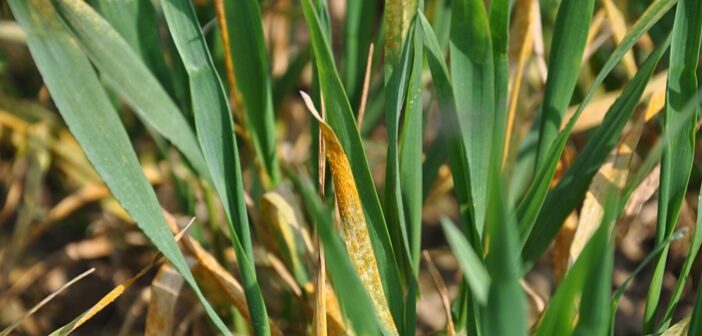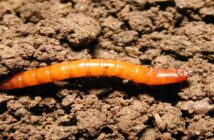Be alert to yellow rust risks in backward and later-drilled winter wheat crops this spring, UK growers are being urged.
According to David King of Syngenta while yellow rust levels were relatively low coming out of winter, it is a disease that likes juvenile leaves and can strike quickly.
“It’s very much a case of being vigilant,” says David. “However, in parts of the country, a lot of wheat wasn’t planted until November, and some earlier-drilled wheat struggled where it was planted in poorer seedbeds. Both of these scenarios render crops more vulnerable to yellow rust.”
In response, he urges growers to carry out an assessment of yellow rust risk as part of their April T1 fungicide decisions – including factors such as drilling date and crop development, as well as variety susceptibility, especially in more rust-prone regions. “T1 isn’t always only about septoria tritici,” he says. “Leaving yellow rust control until the flag leaf (T2) timing can be too late.
“In the right weather conditions, yellow rust can go through its life cycle in just 10-12 days, compared with 14-28 days for septoria tritici, and can cause yield losses of up to 50%. Which is why it’s so important to halt it early.”
Where there are concerns about yellow rust, he advises growers to check the AHDB fungicide dose response curves to get a picture of the efficacy of different fungicides. “Over multiple years, the SDHI fungicide Solatenol, which is contained in Elatus Era, has given excellent yellow rust control and excellent yields in yellow rust situations. It is a cost-effective option applied at T1 at doses between 0.8 and 1l/ha.
“In mixed septoria and yellow rust risk situations, growers should consider still utilising the yellow rust activity of Elatus Era by applying it at 0.4-0.5l/ha as a top-up to fungicides targeted at septoria such as fluxapyroxad + mefentrifluconazole or fenpicoxamid + prothioconazole. This offers high level yellow rust control and adds additional septoria and eyespot activity,” he adds.
He also cautions of insufficient yellow rust activity at the T1 if pressure is low in April as it can eescalate suddenly after T1.
“If this happens, it becomes a dilemma of whether to apply an additional, T1.5, fungicide between T1 and the flag leaf spray. This adds to costs, but if it’s not done, yellow rust might cycle again by the time the flag leaf is out and then become even harder to control.
“Remember, the flag leaf contributes more than 40% to winter wheat yield,” he says, “so preventing yellow rust early, before it reaches the flag leaf, is key. Trial work has shown T1 as being the optimum timing for controlling yellow rust.”




